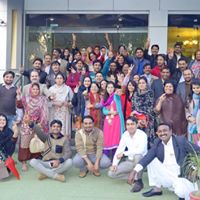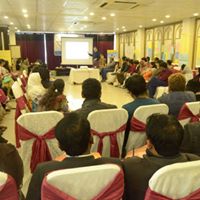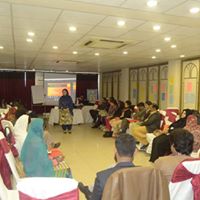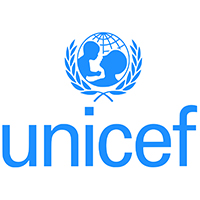Projects
Improving Adolescents Lives in Pakistan
Pakistan’s population of over 180 million people is not only large and growing, but also very young. Approximately 40 million adolescents aged 10-19 currently live in Pakistan and the number of people in the 15-24 age bracket will swell by 20 percent by 2020. Adolescents in Pakistan face a range of challenges, including natural hazards, a complex and often insecure context, rising militancy, climate change, rapid urbanization, disparities in access to basic services, low levels of citizen participation on issues of public interest, high numbers of out-of-school adolescents, unstable national economic growth and high levels of unemployment.
Intergenerational poverty and social and economic exclusion means that adolescents, particularly girls, face limited opportunities in terms of participation and are vulnerable to violence, neglect, and exploitation. Approximately 21 percent of women in Pakistan aged 20-24 were married before the age of 18 and an estimated 14.2 percent of girls aged 15-19 are currently married: in rural areas these figures are even higher. Results from the baseline survey conducted by UNICEF partners in the project geographies (30% of four districts in Punjab and Sindh provinces and selected areas of Lahore and Karachi) highlight that 43.7 percent of women aged 20-24 were married before the age of 18, while 16 percent of girls aged 15-19 are currently married. Baseline results for project areas in Bahawalpur (30% of district population) highlight that 51.7 percent of women aged 20-24 were married before the age of 18, while in Rahim Yar Khan prevalence stands at 49.1 percent.
Violence, particularly against women, is prevalent: data from the Pakistan 2012-2013 Demographic Health Survey indicates that 28 percent of adolescents aged 15-19 years have been exposed to physical or emotional violence. When asked about sexual harassment by baseline survey enumerators, 95,4 percent of adolescents responded that sexual harassment is a girl’s fault. Additionally, whilst structures to address core child protection issues are under development, there are gaps in institutional knowledge and capacity to support the protection of adolescents. Access to formal education systems is limited, particularly for older adolescents. Data analysis from the Pakistan Social and Living Standards Measurement (PSLM) 2010-2011 indicates that approximately 78 percent of boys aged 10-14 and 47.1 percent aged 15-19 are currently in school. This figure is lower for girls: only 63 percent of those aged 10-14 and 35.5 percent aged 15-19 are currently in school. Baseline survey results show considerably lower rates, with only 24.4 per cent of adolescents aged 10-19 in Bahawalpur currently attending any type of education and 9 percent in Rahim Yar Khan.
The right to participation is guaranteed in the Convention on the Rights of the Child which was ratified by Pakistan in 1990. However, the participation of adolescents in public affairs, particularly girls and the most marginalized, and subsequent action from decision-makers is limited. Practical barriers to youth participation and dialogue include the absence of channels or forums through which youth can engage (at the community, district, provincial and national levels) and restrictions related to insecurity in many communities throughout the country. According to baseline results, only 12.5 percent of adolescents (4.7 percent of girls and 20.4 percent of boys) discuss adolescent-related issues with friends or family, while 13.4 percent adolescents participate in any group activity (sports, religious, student association, youth groups) in their communities, again with a stark gender gap (23.8 percent of boys, 3.2 percent of girls). When asked about their capability to influence decisions taken by their parents or local authorities, the vast majority of adolescent boys and girls in project areas stated that their opinion is rarely taken into account, while 59 percent of adolescents in the same areas reported not having an opinion at all, which highlights the lack of investment on adolescent boys and girls, to support them achieving their full potential.
The baseline findings also presented adolescents access to mobile phones and other media related appliances, such as TV and internet in project areas. The main media outlet available and used by adolescents is TV, with approximately 50 percent of adolescent boys and girls regularly watching TV (46 percent for boys and 56 percent for girls). When it comes to other devices, the gap between genders grows considerably. While 34.2 percent of boys have access to a mobile phone, only 9.2 percent of girls do. Access to the internet is very limited for both boys and girls (less than 10 percent overall), although much more so for girls.
To date, every province in Pakistan is struggling to engender a comprehensive and coordinated child protection system, aligned with applicable international minimum standards, including those pertaining to specific gender-related protection concerns of boys and girls, as well as adolescents. In 2016, UNICEF continued to support technically the establishment of such a system in each province or area, as well as delivering additional thematic interventions for a strengthened protective environment for children across the country. UNICEF believes that this long-term, critical effort is laying sustainable and comprehensive foundations for future interventions in support of the protection and development of children in Pakistan.
Adolescents’ rights represent a new, promising area of focus, both for provincial government counterparts and civil society organizations in Pakistan. Through this pilot intervention, CYAAD and UNICEF will engage with key stakeholders at provincial and district level in order to raise awareness and support the strengthened realization of the right of the child to participation and freedom of expression. Evidence and lessons learnt from this initiative will contribute to strengthen implementation of existing policies (e.g. Punjab Youth Policy developed by the Youth and Sports department) and practices around adolescent programming in the Province.
UNICEF Pakistan, together with CYAAD, will intervene to cover 11% of the total population of two districts of Punjab (Rahim Yar Khan and Bahawalpur) to implement a range of activities enabling adolescents to have increased access to and use of information, enhanced confidence and avenues to form and express their opinions. Parents and communities will also be capacitated to understand adolescents’ rights, support their realization and access community-based structures that strengthen the protective environment around them. The project will build on three pillars, as follows:
Pillar 1: Adolescents as change agents for themselves and their communities: Adolescents know about their rights and entitlements and are able to identify and discuss issues that affect their lives.
Pillar 2: Families, communities, and decision-makers protect adolescents from rights abuses: Stakeholders and duty bearers acquire increased knowledge on adolescents’ rights and are encouraged to take action to protect adolescents from rights abuses.
Pillar 3: Public authorities and services uphold adolescents’ rights to ensure their protection, health, and education: Service providers are capacitated to provide adolescent-friendly services.
Status
- Location: Bawal Pur, Rahim Yar Khan
- Duration: 1 year
- Partner Organization: UNICEF Pakistan
- No of beneficiaries: 15000
- 24/7 Support




